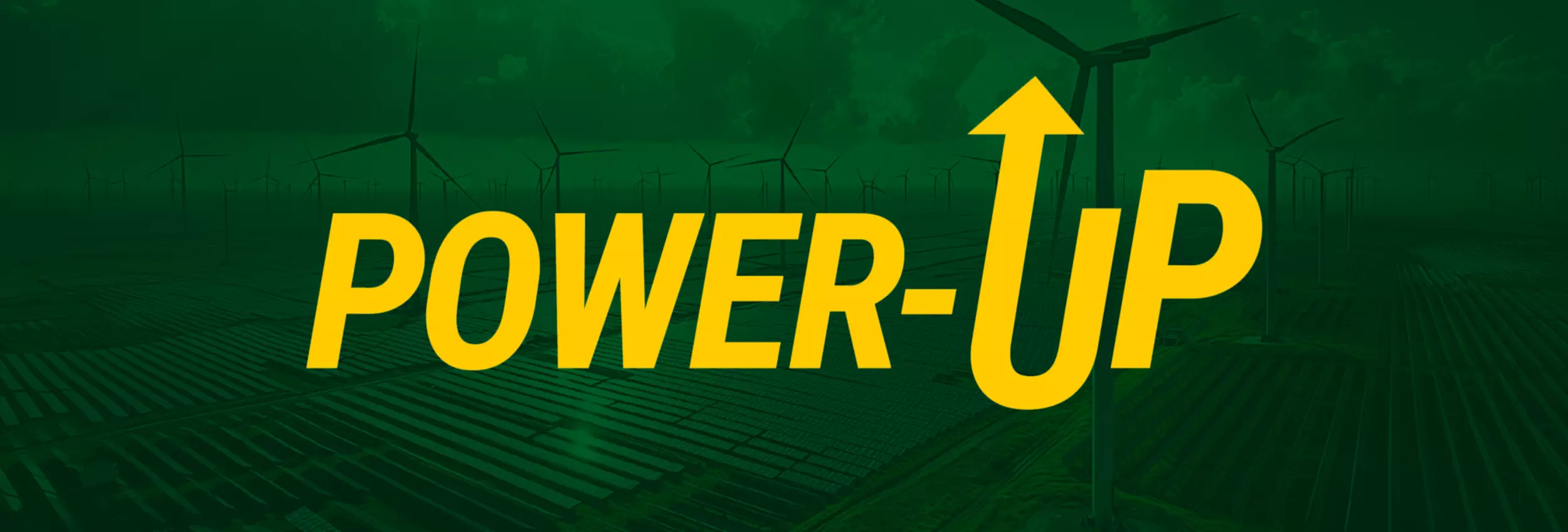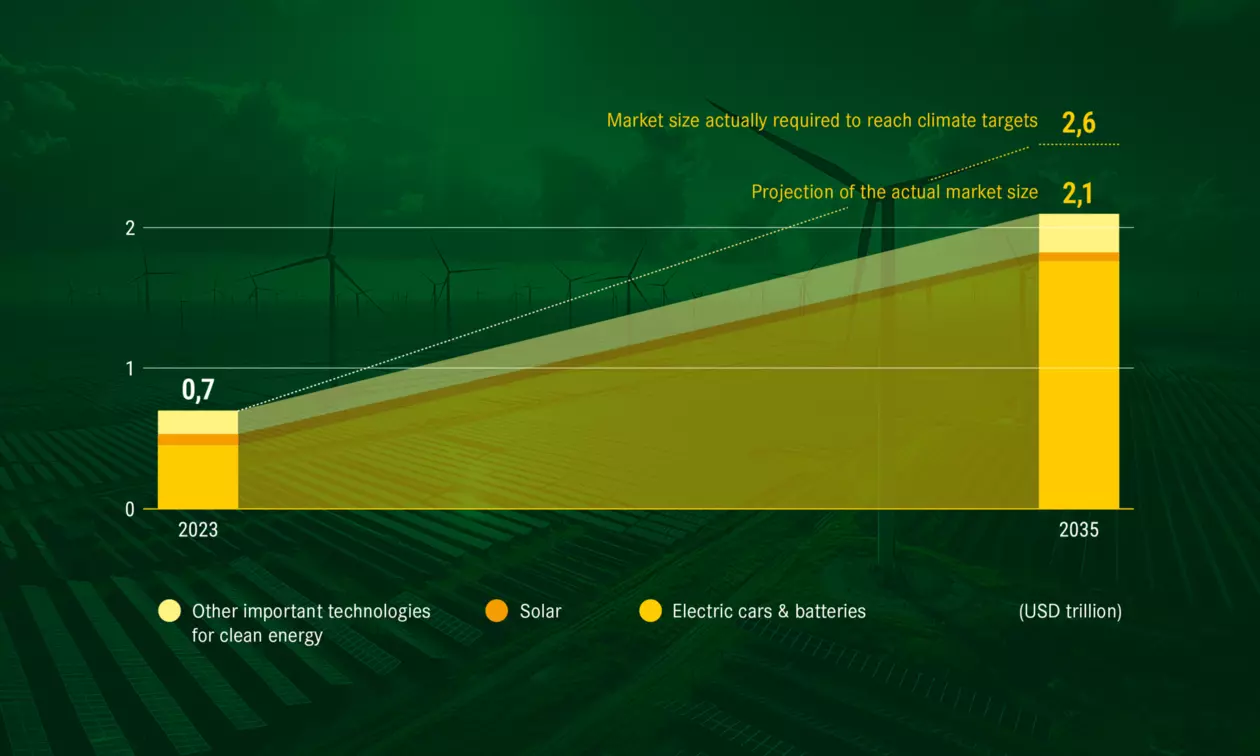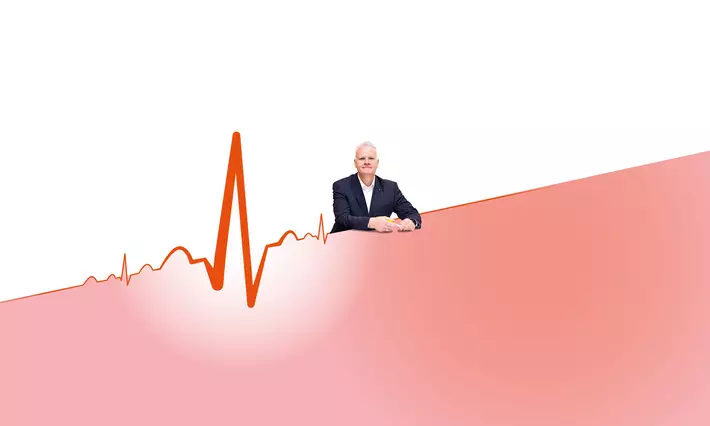Power-up

Market size of the most important technologies and components for clean energy

Source/data basis: IEA
“Energy Technology Perspectives 2024“ (ETP-2024) focuses on the prospects for solar photovoltaics, wind turbines, electric cars, batteries, electrolysers and heat pumps. Based on the current political conditions, the global market for these technol-ogies will surge from USD 700 billion in 2023 to over USD 2 trillion by 2035. Trade with clean technologies is also likely to rise rapidly and reach USD 575 billion which is more than 50% larger than today’s global trade with natural gas.
Last year, Germany generated 59% of its electricity from renewable sources such as wind, solar, water and biomass. In the previ-ous year, the share still stood at 56%.
Consequently, the of renewable energies in gross electricity consumption expanded to around 54% (2022 46.3 %; 2023: 52.5 %)
Electricity generation from wind energy in 2024 was roughly on a par with the previous year, while electricity from photovoltaic systems trended upwards
Rise in PV systems: The total installed power climbed by almost 16 gigawatts to its current level of a sound 98 gigawatts.
Over a million new PV systems are currently being connected to the grid every year – including large-scale ground-mounted systems and small solar systems for
Electricity generation from biomass, hydroelectric power and geothermal systems in 2024 also rose by around 2% year on year.
Worldwide trade with clean energy technologies
Worldwide trade with clean technologies = USD 200 billion = 30% of the global market value
Electric cars make up the largest share and have doubled since 2020 followed by photovoltaic solar systems This figure is expected to climb to USD 575 billion by 2035.
Source/data basis: IEA
Source/data basis: IEA
Supply chains for clean technologies are largely dependent on trade and will remain so in the future.
Energy sources for Germany’s public sector net electricity generation, November 2024

Sources/data basis: Statista, ENTSO-E, Federal Statistical Office:, AGEB
More investments and employees
Source/data basis: IEA
Capital expenditure on efficiency in end-use sectors, including electrification, is likely to have risen by 4% to around USD 660 billion in 2024, thereby matching the all-time high of 2022
Quelle/Datenbasis: IEA
This is also reflected in the corresponding occupations: In 2024, the number of employees in jobs linked to energy efficiency reached nearly 10 million.

Lars Kühme
Position: External Communication
- Department: Corporate Communication & Branding
- Company: HARTING Stiftung & Co. KG


